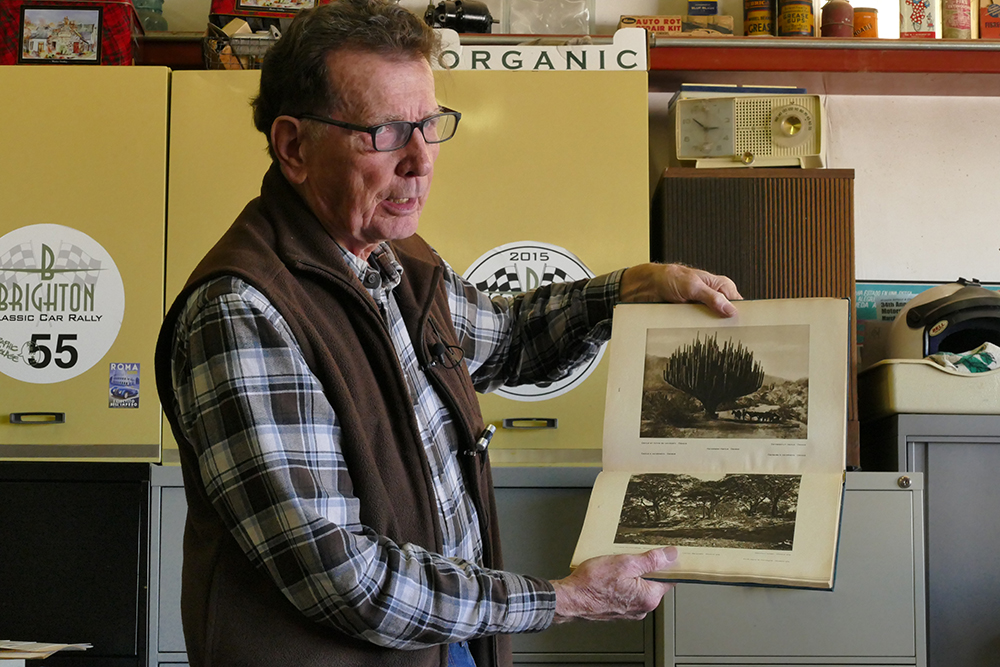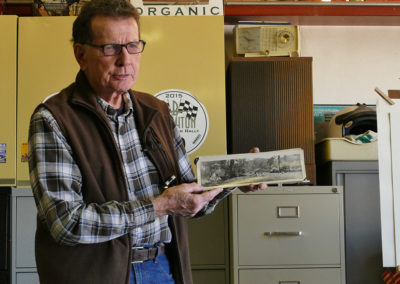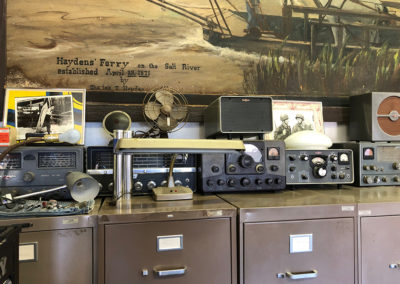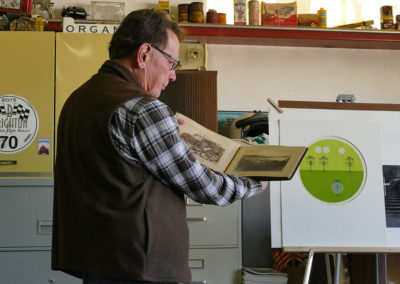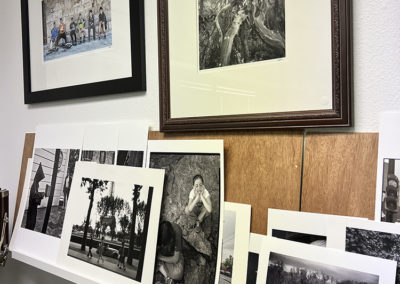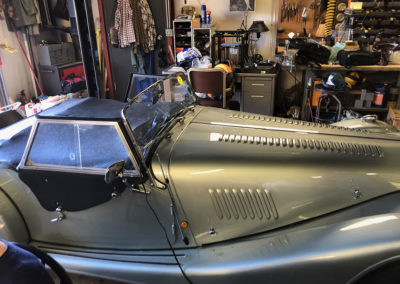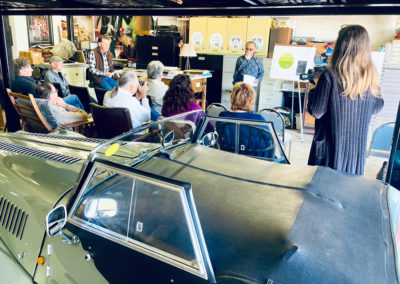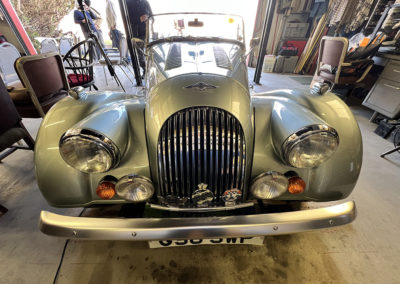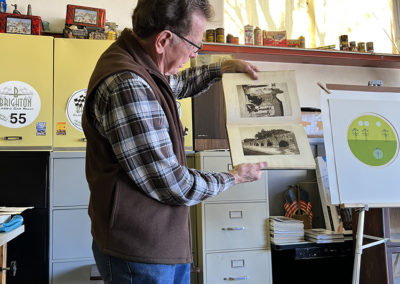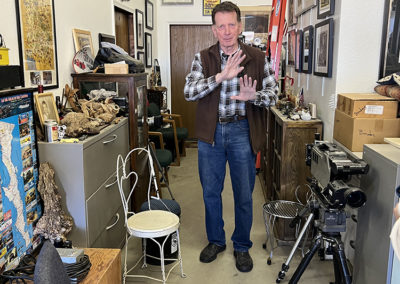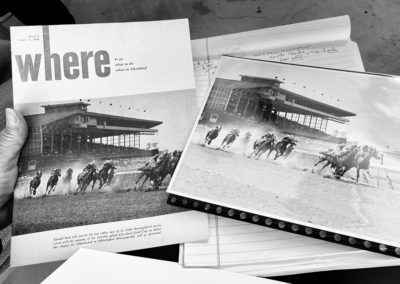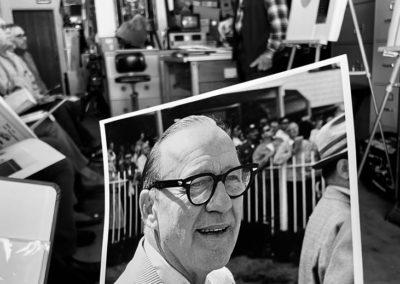If you are a reader of this blog, I won’t have to do an extensive background on Neil Miller. Neil is part of the foundational glue that binds this organization together. You already know him, the tall, gracious man with an ever-present camera around his neck. On a Saturday afternoon, Neil opened his studio spaces to AZPA members for a tour of his extensive collections that span almost 60 years. Seriously, his collections go back to his early interest in photography that began in high school.

The attendance was so large that we were divided into two groups to be able to fit into the studio. If the studio were empty, you could use it as a hangar for a small plane. But it’s packed with a lifetime of memorabilia that reflects all of Neil’s passions. The first things you notice about the space is the sheer volume and variety of collections. Vintage English sports cars share the room with print drawers of photographs, posters and paper memorabilia. Radio and video equipment line the walls and shelves. Curio cabinets hold antique and unique cameras throughout the labyrinth of passages. Four of artist, Earl Linderman’s large Doktor Thrill paintings look down at you from the upper walls of the studio.
Neil gave a brief overview before he conducted a tour of the studio. He shared early photographs from childhood, high school and starting photo jobs like horse racetracks and celebrity candids. The photographic practices were varied, but Neil emphasized the mentorship he had received as a through line with all his experiences. From his high school teacher to his work with Clarence White Jr., at Ohio University, and the workshops at the Friends of Photography, Neil credited the personal relationships he had fostered as some of the most important influences in his development.
We passed around 19th century photographs and albums that he had collected by catalog correspondence with dealers in England. Neil even shared work from his fellow students during the graduate years at Arizona State University.
We did a tour of the workspaces as well. We followed the narrow paths to the backrooms. Along the way we could duck into any number of cul-de-sacs of curiosities relating to photography. A darkroom was packed with everything you needed for a long day of analog (including a bathroom). An office filled with artifacts reflected a curious and well-traveled life as did a digital workroom, again surrounded by an assemblage of photographic objects and ephemera. I’m tempted to describe the organization like geologic uplift, but I’m sure if I asked Neil about something he could put his hands on it in minutes.

Neil’s daughter Sandi was actively vlogging the event to help her document the contributions of her dad and other journalists in the earlier days of Phoenix news reporting. You can find out more about this at Sandi Miller’s YouTube channel Vintage News Arizona. Afterward we had lunch and did some citrus picking before a quick wrap-up with the second group. A very big thank you to Neil for sharing all the passions and wonderful treasures of his life.
Special thanks go out to Dean Terasaki for all the logistic efforts and Teri Terasaki, Sandi, and Marilyn Miller for keeping us organized and well fed.
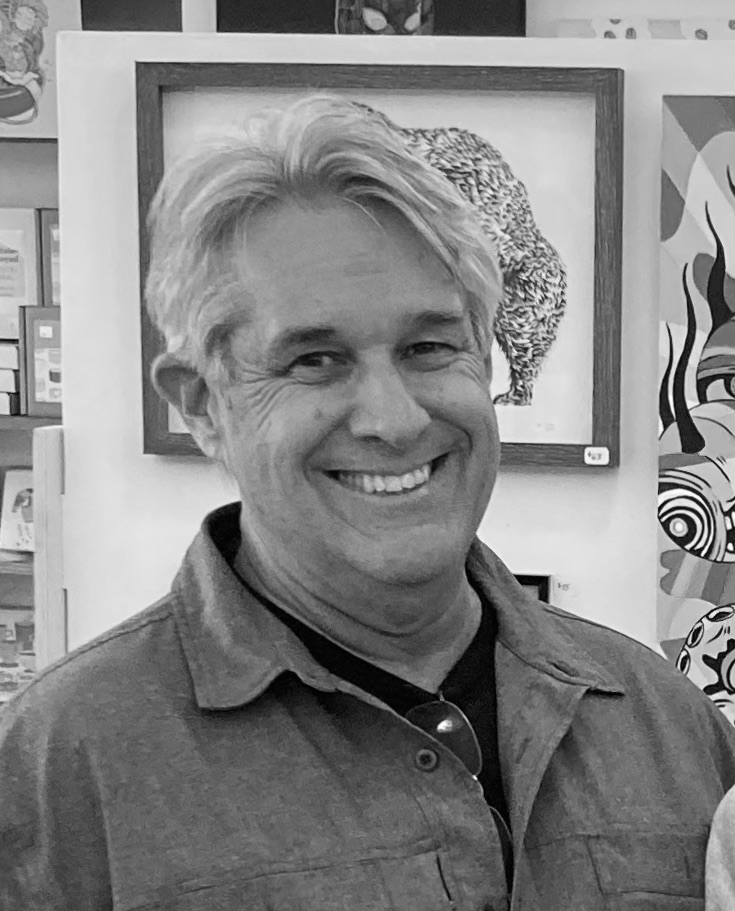
Robert Galloway
Contributing Writer
Bob Galloway began a serious interest in photography after he saw photographs of an early performance art piece and realized the photographs had a more lasting impact than the event itself.
Originally from Ohio, he received a Bachelor of Fine Art in Art from Ohio State University and then moved to the desert in 1979 to pursue a Master of Fine Art in Photography at Arizona State University. Bob is an emeritus professor from Mesa Community College where he taught photography for 39 years.
In addition to teaching, he was an arts administrator for the Maricopa College District for five years, creating the first district wide literature journals, music competitions and art exhibits.
Bob is very encouraged about the embrace of local arts at a grassroots level and hopes to assist in that growth and development. His photographic experience and interests have been wide ranging. Currently he has been looking at how we are using the desert environment as a performance space.
“It’s really difficult to have a bad day when you wake up in the morning and get to talk about art with people.”
Contact Bob

